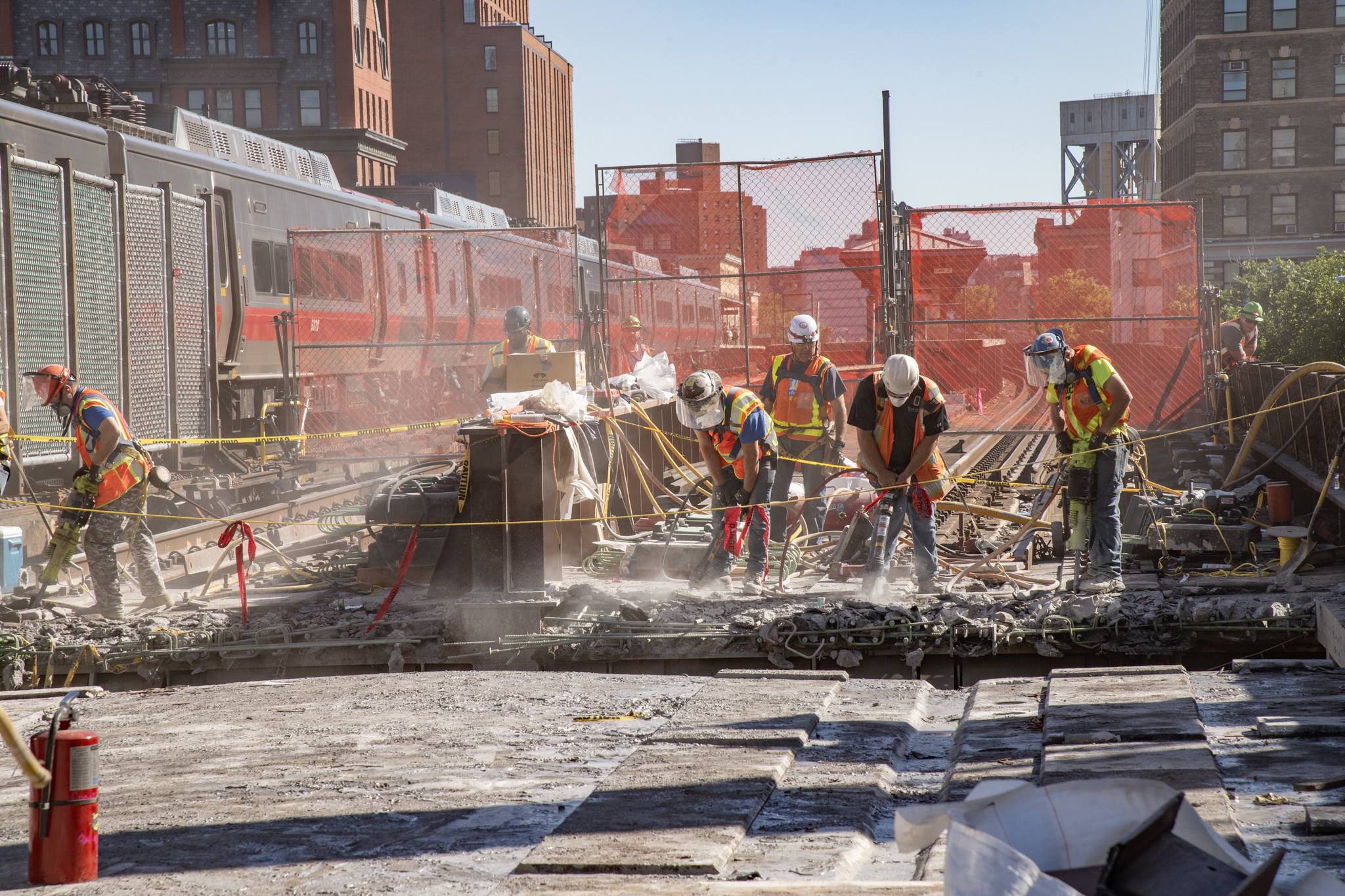
NEW YORK – The Metropolitan Transportation Authority replaced the first section of the 130-year-old Park Avenue Viaduct in Manhattan without disrupting Metro-North service over the weekend, the transit agency said yesterday.
The Park Avenue Viaduct carries four Metro-North Railroad tracks and serves all Metro-North trains traveling into and out of Grand Central Terminal, totaling 750 trains every weekday.
This past weekend’s operation utilized two gantry systems which extend over the viaduct to remove and replace the existing concrete and steel bridge deck with new prefabricated bridge units, weighing around 190,000 pounds each.
“The seamless replacement of the first segment of the Park Avenue Viaduct is a great example of the innovative approach we take to delivering critical projects better, faster, and cheaper,” MTA Construction & Development President Jamie Torres-Springer said in a statement. “Innovation, along with strong project management, will help us to deliver this mega project on time and on budget with little to no impacts to service.”
“All Metro-North trains to and from Grand Central Terminal pass over the Park Avenue Viaduct, which is more than 130 years old,” Metro-North Railroad President Catherine Rinaldi said in a statement. “Replacement of this structure is a priority state of good repair project that is critical to our ability to provide safe and reliable service. We are thrilled that this project is underway, and we will continue to work closely with MTA Construction & Development to minimize impacts to our service.”
Phase 1 of the project, extending from East 115th Street to East 123rd Street along Park Avenue, includes replacement of the existing steel structure as well as new tracks, power, communications, and signal systems. Substructure construction to replace the viaduct’s foundations and columns began in September 2023 and construction for Phase 1 will continue through 2026. This first round of work is part of the $590 million earmarked for the first phase of the Park Avenue Viaduct Replacement project, of which $500.9 million is federally funded.
The entirety of the Park Avenue Viaduct runs from the entrance of the Park Avenue Tunnel at East 97th Street to the Harlem River, however, the Park Avenue Viaduct Replacement project focuses on the structural elements in need of repair dating from the 1890s between East 110th Street and the Harlem River Lift Bridge, spanning 1.8 miles.














the railroad way get it done
It’s very refreshing to see a project being done quickly and efficiently, especially in NYC.
It’s always a wonder how quickly a railroad bridge can be demolished and replaced. To remove an old highway bridge and build a new one in its place takes a full construction season. The railroads can do it overnight.
At a cost of course. That big yellow rig is something else, isn’t it?
Try to imagine the logistics of that yellow beast, and keeping cars and people out of its way in densely populated Harlem.
I’d love to see a video from The B1M with more detail on how this works.
So, what effect will this have on axle loading?
I’d imagine that’s not what they’re worried about. The concern is likely that this viaduct should’ve been replaced 40 years ago but was ignored due to lack of funding. They don’t want another I-35 bridge incident to happen.
No kidding. The Park Avenue viaduct has historically been a factor in equipment procurement due to limits on axle loading. Hopefully the new structure will increase that parameter and make life a little easier for the rolling stock engineers.
George, you should be able to slow the playback speed. Tap the screen once. You should see a “gear” in the upper right, that brings up the “settings menu”. Select “playback speed”. Then you can slow it down to your liking.
Thank you, sir. Much better at .25 speed.
That video is impressive. I wish I could slow it down on my screen.